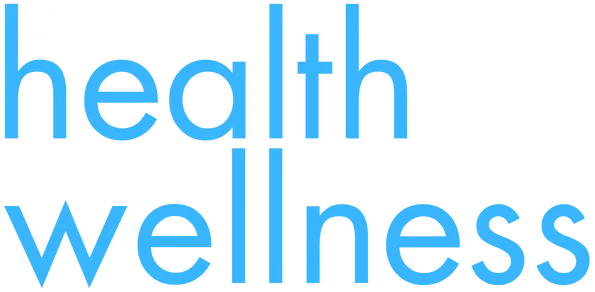

REAL ESTATE ARTICLES

A Heartfelt Wake-Up Call: Part Two of My Health Journey
In my last article, I shared the twists, turns, and revelations that have defined my path to wellness. I want to take this opportunity to highlight the heart attack event, as it has served as a turning point in my life. I hope that it will serve you, the reader, as well.
This recent experience has deepened my understanding that health isn’t a one-time goal but a process requiring vigilance, adaptation, and resilience. My heart attack—caused by a clot likely related to a previous COVID infection—became a powerful pivot point. It was both humbling and motivating, reminding me that even those dedicated to a healthy lifestyle can be caught off guard.
The Warning Signs I Missed
Looking back, the signs had been there. I’d been experiencing neck pain that wouldn’t go away despite regular acupuncture and chiropractic adjustments. It didn’t occur to me that this pain could be a symptom of a larger issue. I was also becoming winded more easily, especially as the summer of 2023 went on. Yet I didn’t connect these symptoms to my heart, assuming they were temporary or related to stress.
When the heart attack occurred, it was a shock. Although left arm pain is often cited as a classic symptom of a heart attack, my pain was in my neck, caused by the blockage in my right coronary artery. I did not experience any left arm pain whatsoever. This progression was so gradual that it never occurred to me I was experiencing heart trouble. Later, my doctor confirmed that I had a genetic kink in my artery, making it more susceptible to clots. Tests revealed the clot had calcified, meaning it had likely been forming for nine to fifteen months, coinciding with my COVID infection. I firmly believe COVID played a role in triggering that clot.
Thankfully, I had an excellent surgeon who was able to clear the blockage and place two stents. Western medicine was incredible in this regard and saved my life. Once the clot was treated, the pain in my neck completely disappeared.
Navigating Post-Heart Attack Protocols and Complications
Following surgery, I started on the standard post-heart attack protocol of medications, despite my hesitation. My doctor convinced me that they were essential to prevent another heart attack, especially in the days following stent placement. The regimen included a beta blocker, aspirin, a blood thinner, and atorvastatin, a statin medication for cholesterol management.

However, the medications quickly led to their own complications. The beta blocker caused irregular heart rhythms, so I wore a heart monitor to track these ventricular extra beats. After my doctor identified the beta blocker as the cause, I was able to stop taking it, but I still faced issues. Atorvastatin caused a severe reaction, resulting in rhabdomyolysis—a breakdown of muscle tissue that can lead to kidney damage. I switched to rosuvastatin, which was better tolerated, though I continued to experience muscle aches.
Through this challenging process, I gained a deeper understanding of cardiovascular health and the tests that should be standard for anyone with heart concerns. I now recommend getting a full lipid panel, including lipoprotein A and B levels, as well as a calcium cardiac score. These tests can reveal a lot about your heart health and may alert you to potential issues before they become critical. Though these tests aren’t always covered by insurance, they can provide invaluable insights and potentially reduce the need for emergency care later.
Rediscovering Balance: Alternative Therapies and Lifestyle Adjustments
Beyond managing the immediate aftereffects of the heart attack, I turned my focus to more holistic approaches. I revised my diet to include more heart-healthy, anti-inflammatory foods and embraced a tailored exercise regimen. Alongside these lifestyle changes, I tried additional therapies to address underlying issues that I suspected were straining my immune system and overall health.
I underwent a parasite cleanse, which brought significant improvements to my digestive health. Without getting into graphic details, I passed parasites that were likely decades old, and I learned that upper GI and esophageal issues were being caused by these parasites. I also discovered that parasite infections could cause mood swings and disrupt cortisol levels, affecting my overall stress response. These insights were eye-opening and crucial to my healing process.
I also started using AllergyEasy, a desensitization program, to help with food sensitivities. These treatments have improved my immune response and helped reduce the symptoms of eosinophilic esophagitis (EoE), a chronic allergic condition. These adjustments have been some of the most impactful steps in my wellness journey, as they address both my cardiovascular health and the immune issues that have plagued me for years.
Although today, I still seek chiropractic adjustments and acupuncture for continued healing, I also find great benefit in salt floats, grounding, and daily meditation. These practices help me focus more on other aspects of my recovery and overall well-being.
A Healthier Path Forward
Today, I am healthier and more energetic than I have been in a long time. My journey has taught me that health is not a static goal but a continuous process of learning, adapting, and evolving. Each stage of my life has brought new insights and challenges, reaffirming that the path to well-being is an ongoing journey rather than a one-time achievement. This experience has not only deepened my understanding of health but has also shaped the way I approach my work and personal life.
I now lead every discussion with patients with the perspective that health is a dynamic journey. Knowing there is always a path to wellness, I share my knowledge and experiences to help others navigate their own paths to well-being, emphasizing that we are all capable of change and improvement. Our results follow within the journey, not as a fixed destination but as a continual process of growth and adaptation.

